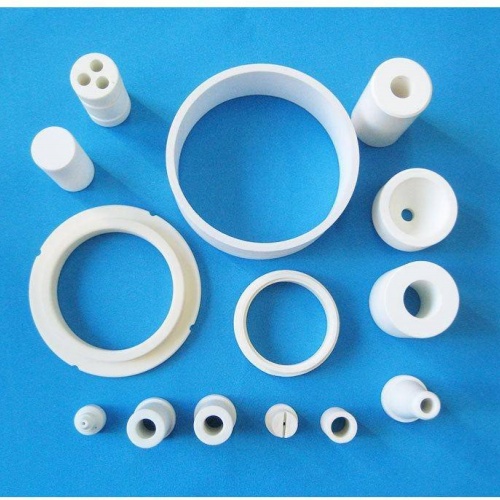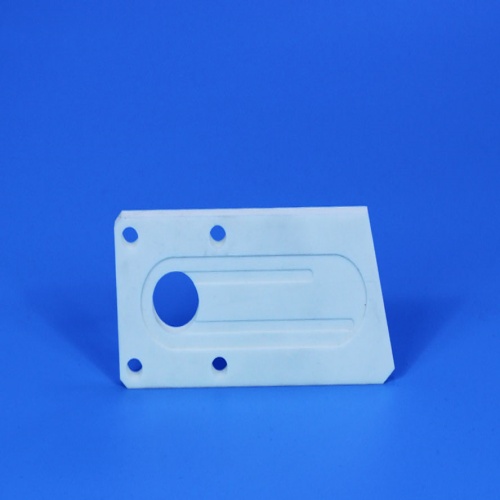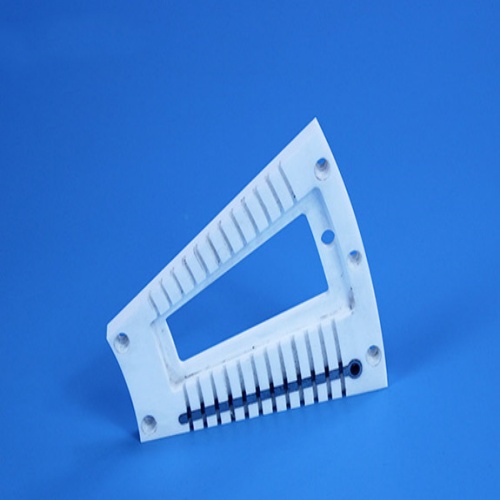How to Determine the Quality of Alumina Ceramics
Alumina ceramics is an important ceramic material, widely used in electronics, machinery, chemical industry, aerospace and other fields. Its performance directly affects the service life and reliability of the product. Therefore, it is crucial to correctly judge the quality of alumina ceramics. So what are the methods to judge the quality of alumina ceramics?
Appearance inspection
- Surface quality
Smoothness: The surface of high-quality alumina ceramics should be smooth and delicate without obvious scratches, dents or bumps.
Color uniformity: The surface color should be uniform without color difference or black spots.
- Defect inspection: Check the surface for defects such as cracks, pores, trachoma, etc. These defects can affect the strength and durability of the ceramic.
- Dimensional accuracy
Measure the length, width, thickness and other dimensional parameters of alumina ceramics to ensure that they meet the design requirements.

Physical performance testing
- Density measurement
- Density is one of the important indicators of the quality of alumina ceramics. Its density can be measured by gas replacement method, water immersion method or densitometer. The higher the density, the better the compactness of the material and the better the performance.
- Hardness test
- Alumina ceramics usually have a high hardness and can be measured using methods such as a Rockwell or Vickers hardness tester. Ceramics with high hardness have better wear resistance and scratch resistance.
- Strength test
- Bending strength: The bending strength of alumina ceramics is measured by three-point bending test or four-point bending test. Ceramics with high bending strength are more reliable in practical applications.
Tensile strength: An external force is applied to deform the material, and the mechanical properties of the material are evaluated according to the stress-strain relationship during the tensile process.
- Thermal performance testing
Thermal conductivity: The smaller the thermal conductivity, the better. Special tools can be used for testing.
Thermal expansion coefficient: Measure the linear and volume expansion coefficients of alumina ceramics to evaluate their thermal expansion properties.
Heat resistance: To test the performance of alumina ceramics in high-temperature environments, high-quality products should be able to withstand extremely high temperatures.
Chemical performance testing
- Purity testing
- X-ray fluorescence spectrometry: The purity of alumina is determined by X-ray irradiation of the sample and analysis of its spectrum. High purity alumina ceramics have better properties.
Chemical analysis method: by chemical methods to detect the content of impurities in alumina, such as silica, iron oxide, etc.
- Chemical resistance
- Conduct chemical stability tests such as salt spray testing, and high-quality alumina ceramics should have extremely strong chemical resistance.

Microstructure analysis
- Crystal structure analysis
- Use X-ray diffraction (XRD) to analyze the crystal structure and grain size of alumina ceramics. α-Al 2O O has the tightest crystal structure, high hardness and wear resistance, and is the most commonly used raw material for the manufacture of alumina ceramics.
- Microscopic morphology observation
- Scanning electron microscopy (SEM) was used to observe the surface morphology and microstructure of alumina ceramics. Ceramics with uniform and dense microstructures have better performance.
Non-destructive testing
- Ultrasonic testing
- By sending ultrasonic pulses and measuring their echo signals, it is possible to detect the presence of cracks, pores, and other defects in alumina ceramics.
- Thermal imaging detection
The use of infrared radiation to measure the thermal distribution of materials to detect hot spots, thermal cracks, and thermal stresses in alumina ceramics.

Practical application testing
- Wear resistance test
- Test the wear resistance of alumina ceramics by simulating the actual use environment. High-quality products can still maintain good performance after long-term use.
- Electrical performance test
Test the dielectric constant, resistivity and other electrical properties of alumina ceramics to evaluate their electrical insulation properties.
Through the above testing and evaluation, the quality and performance of alumina ceramics can be comprehensively judged. In practical applications, appropriate testing methods and standards should be selected according to specific needs to ensure that the selected alumina ceramics meet the requirements of use.
PREVIOUS:What are the differences between zirconia ceramics and alumina ceramics
NEXT:How to check the quality of zirconia ceramic workpieces
CATEGORIES
LATEST NEWS
- Petrochemical ceramic injec...
- Zirconia Ceramic Rod Custom...
- High-temperature resistance...
- What is the wear resistance...
- What is the hardness of cer...
- Aluminum oxide ceramic cust...
- What are the main aspects o...
- What are the mechanical pro...
- Thermal properties of zirco...
- What properties should be c...
